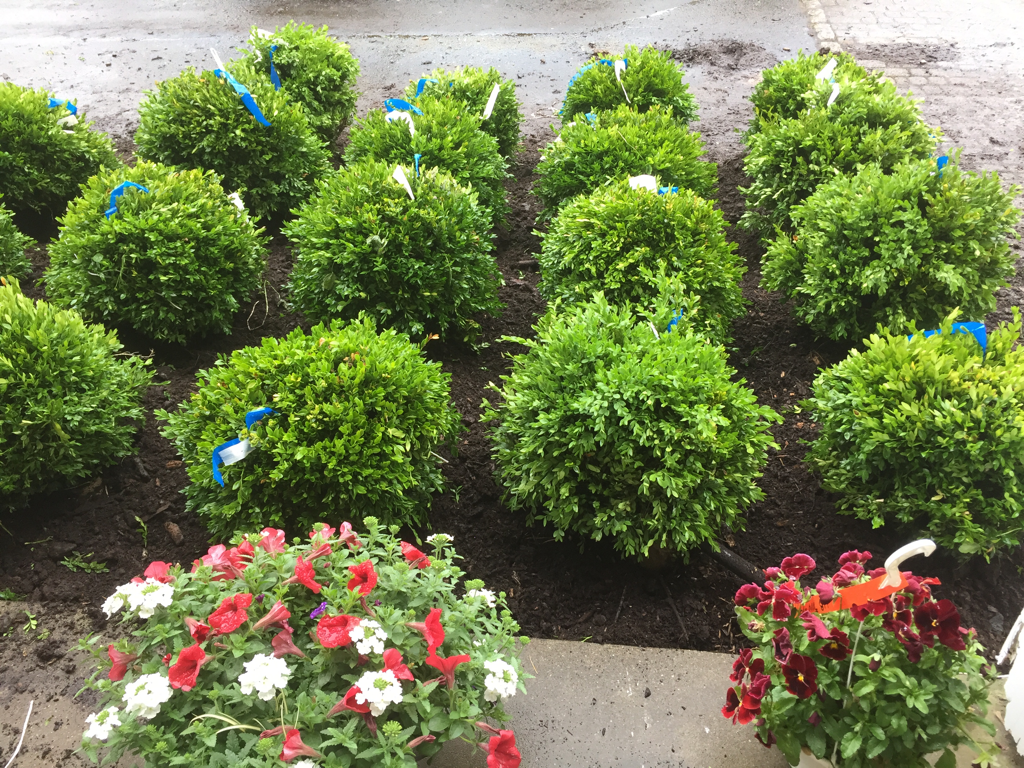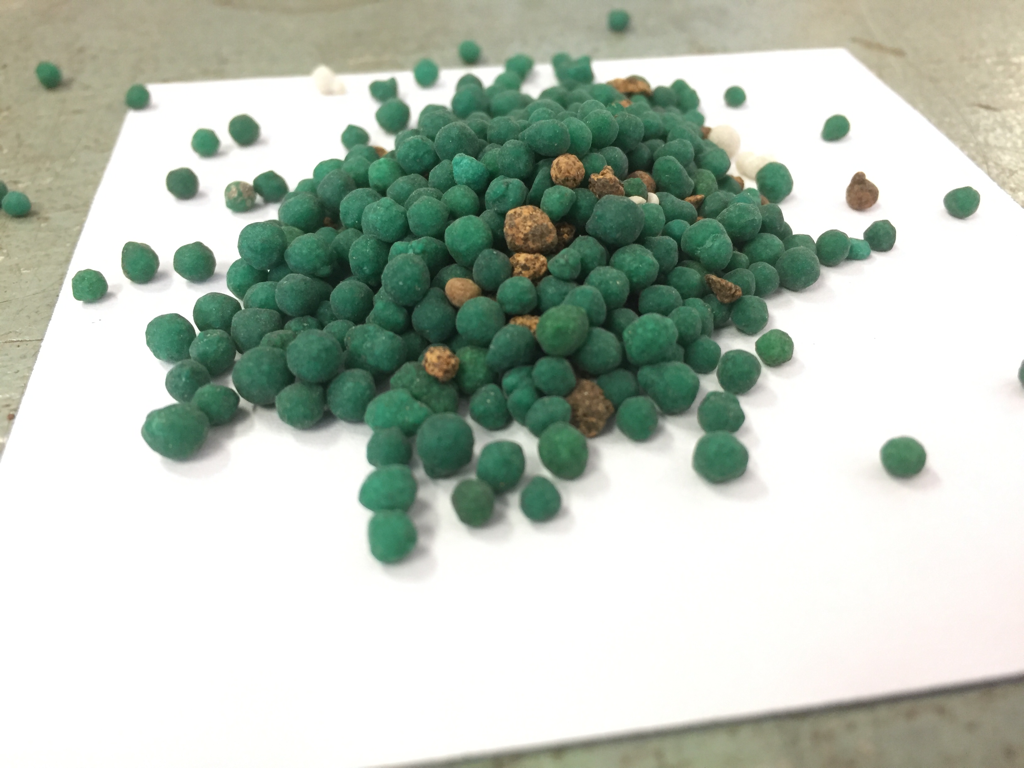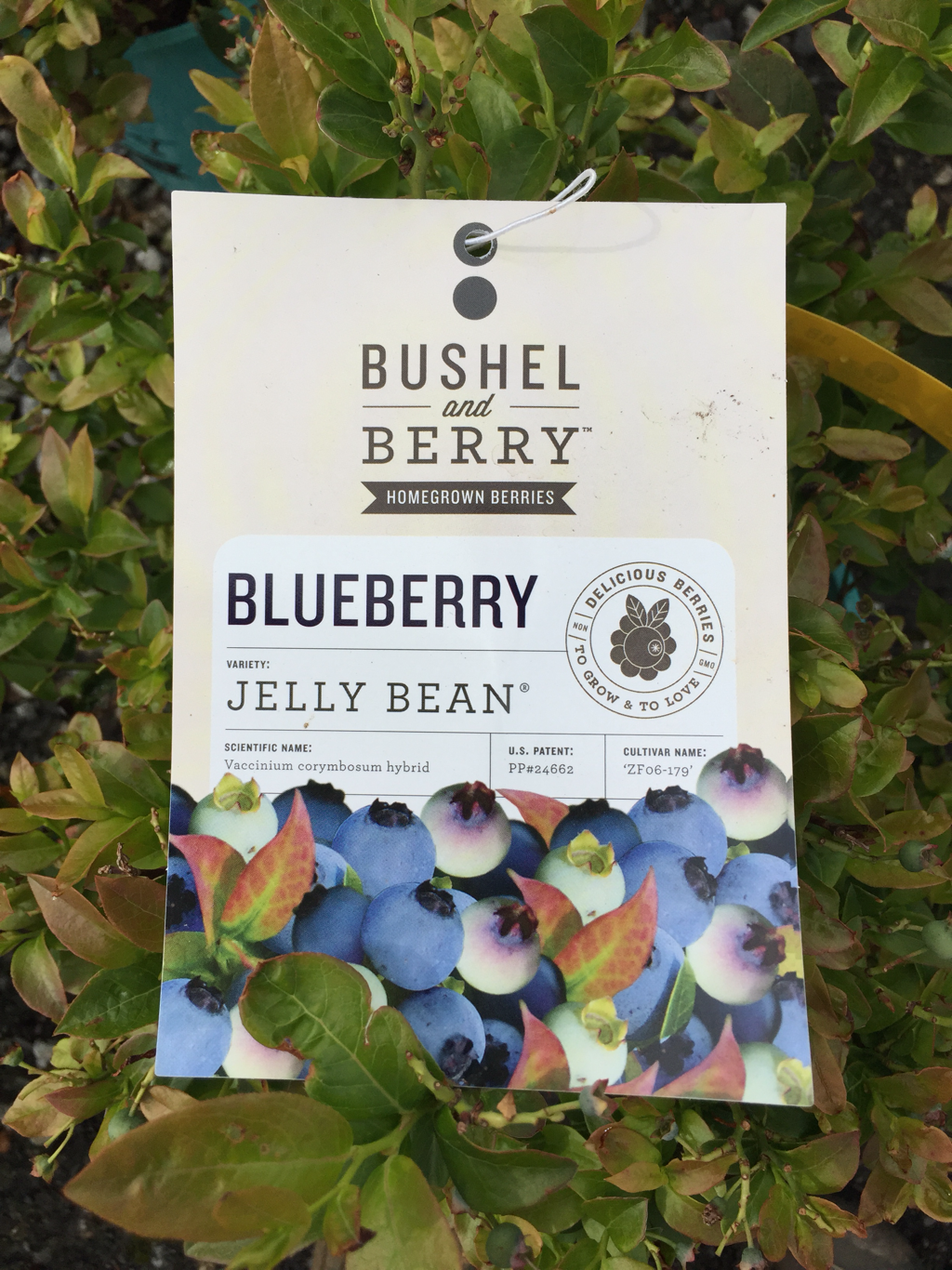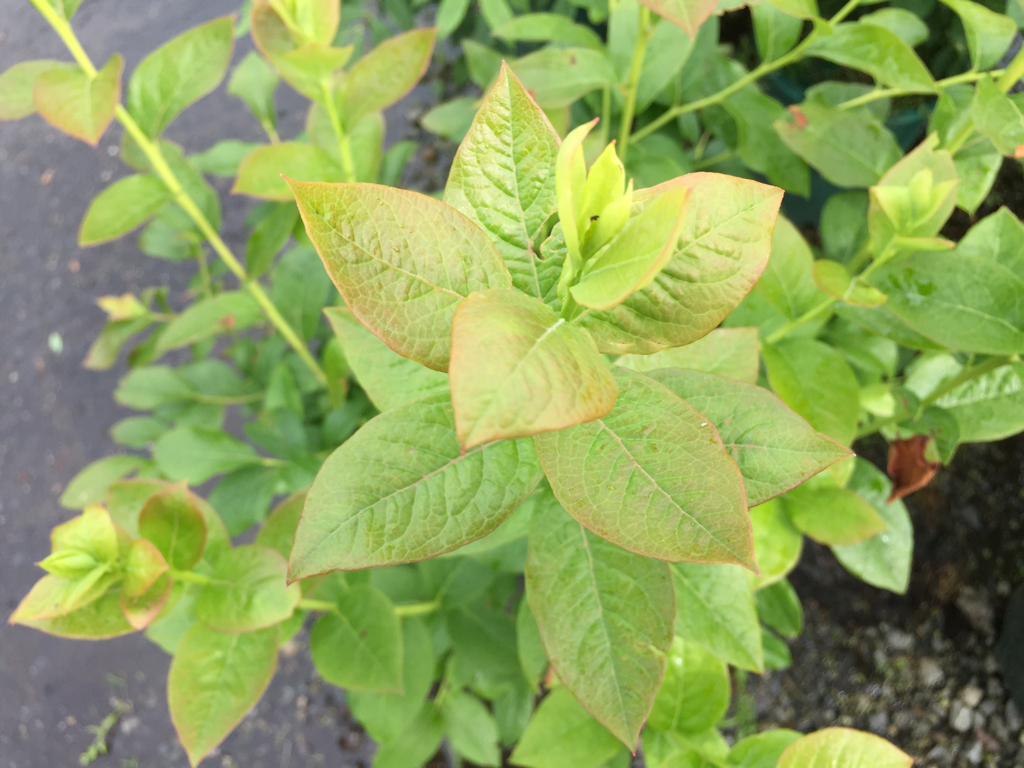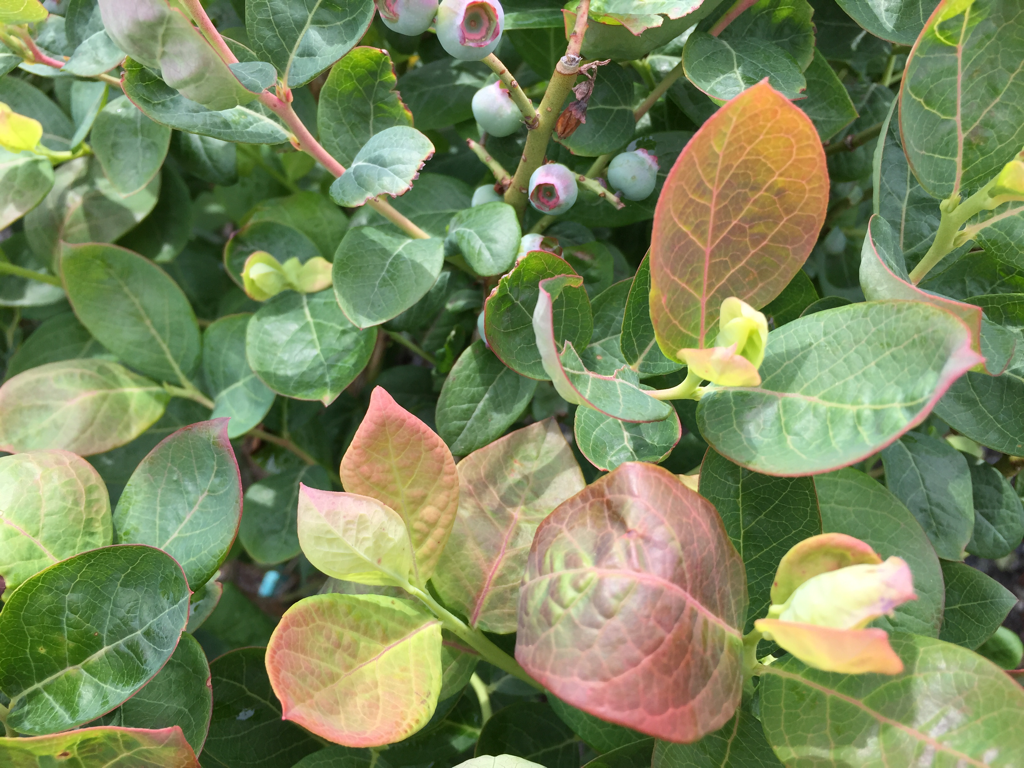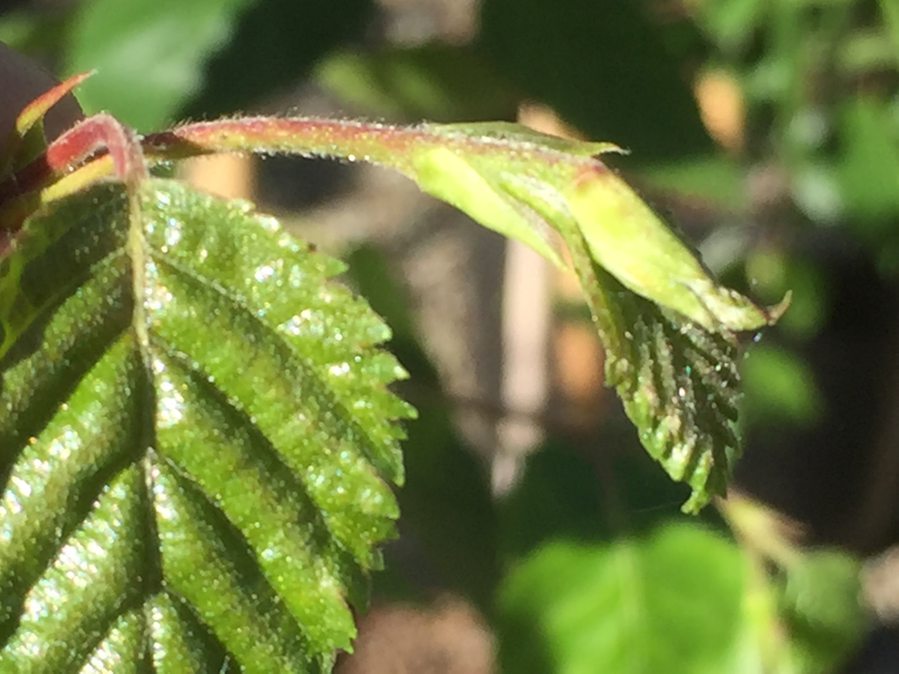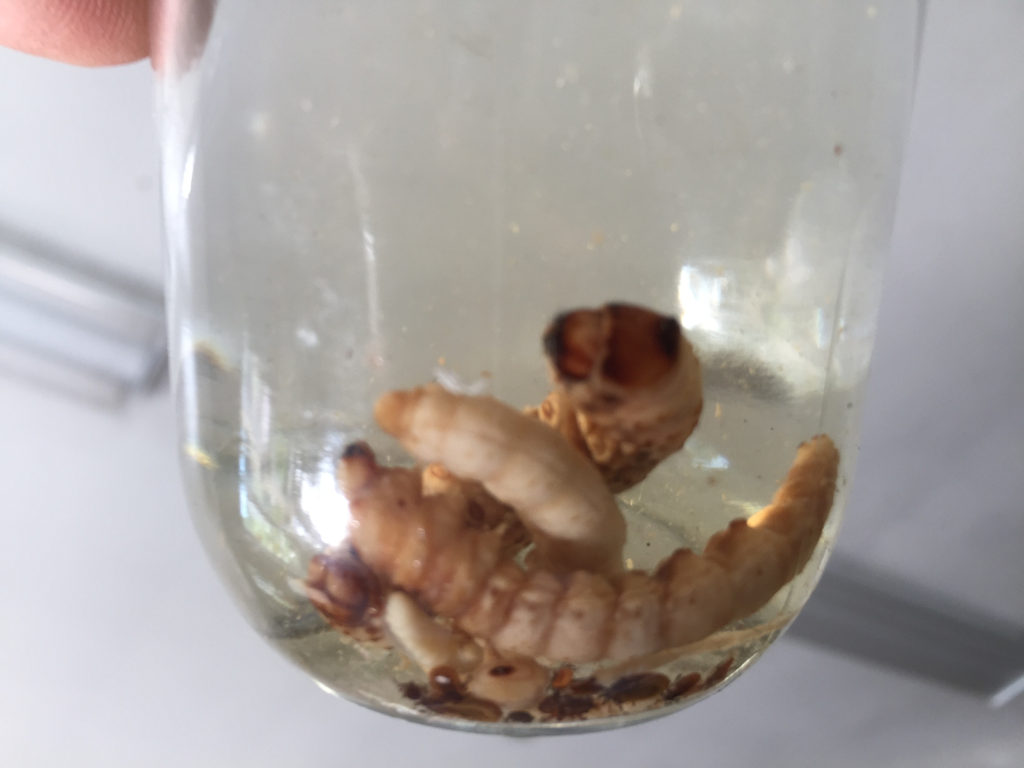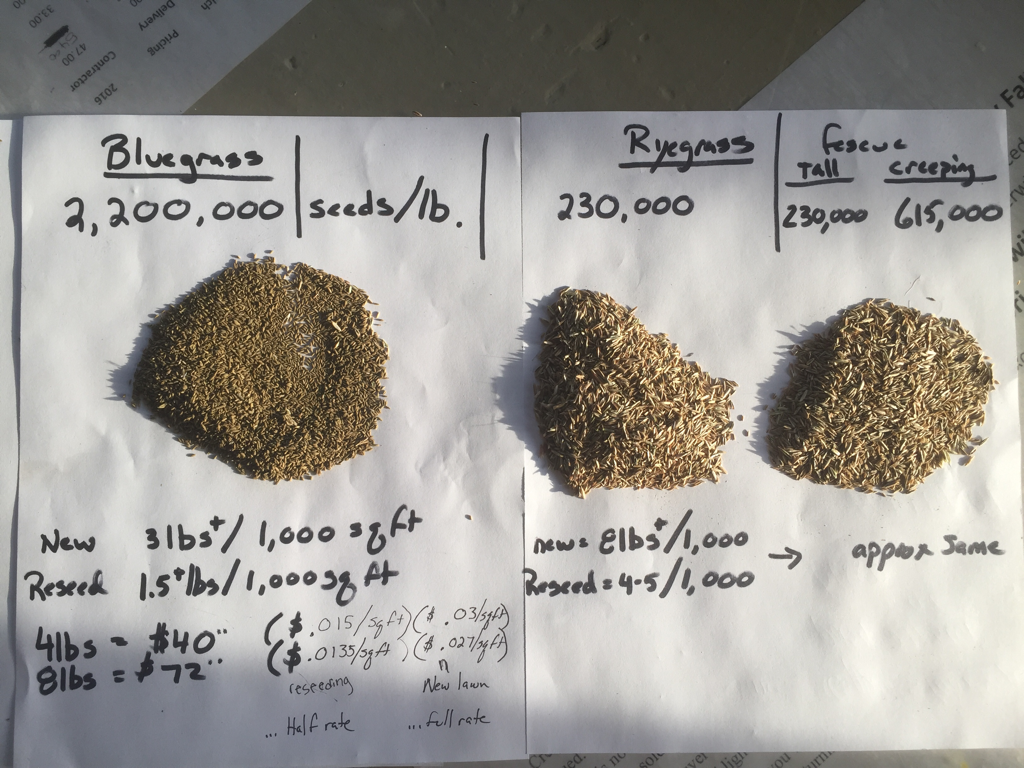Are you supposed to feed plants when you plant them? No. With our plants there is already fertilizer in the pot feeding the plants while they are here, so adding more fertilizer when planting is not necessary and might be bad for the new plant depending upon what kind of fertilizer you are using. We have, over the years, experienced homeowner overfeeding situations resulting in the wounding or death of new plants, so be on the safe side and just plant and water (see our planting directions).
When should I cut back my hydrangeas? Two part answer:
1. Old varieties like 'Nikko Blue' (big 5' tall plants with large grapefruit-sized blue or pink blossoms) should NEVER be cut back because the flowers for the next summer are produced the fall prior and any pruning will result in no flowers for 18 months. These types of hydrangeas flower on "old wood."
2. New varieties flower on new wood, so you can mow them to the ground in the fall or spring and they will still flower that summer.
Ideally if you have chosen your hydrangeas right, you never need to prune them because they will grow to the height you want. Cutting them back should always be done in conjunction with feeding them with a high octane slow release fertilizer. Hydrangeas are heavy feeders, and need nutrients to produce prolific flowers for as long as they do.
1. Old varieties like 'Nikko Blue' (big 5' tall plants with large grapefruit-sized blue or pink blossoms) should NEVER be cut back because the flowers for the next summer are produced the fall prior and any pruning will result in no flowers for 18 months. These types of hydrangeas flower on "old wood."
2. New varieties flower on new wood, so you can mow them to the ground in the fall or spring and they will still flower that summer.
Ideally if you have chosen your hydrangeas right, you never need to prune them because they will grow to the height you want. Cutting them back should always be done in conjunction with feeding them with a high octane slow release fertilizer. Hydrangeas are heavy feeders, and need nutrients to produce prolific flowers for as long as they do.
When is the best time to plant nursery stock?
Our industry has done a poor job getting the word out about this. In the pre-plastic days the answer was "in the spring or fall" but now plants come in pots so when you bring them home and plant them there is no root damage from transplanting. Burlapped larger plants are no longer dug locally like they used to be. Now, nurseries get their stock in large deliveries in March and April and are stored for purchase all season long. It's only trees that are being transplanted that are time sensitive. Anyone can plant anything all year long with the only restriction being frozen soil that keeps one from digging a hole.
Now down to the nitty gritty answer: If you are planting a lot of stuff, plant in the fall with fall defined as any time after the summer heat and drought all the way up to Christmas. The later you plant, the less you need to water. When I plant trees on my property at home, I plant them in November/December. Why? Because I never ever need to water them (isn't that nice?). People ask- "well, aren't you worried about winter killing them? No, I am not. My years at the nursery has showed me that If something dies in the spring, it was dead before fall, you just couldn't tell. Summer kills plants...they struggle through the fall and winter finishes them off.
If you plant a black eyed susan in October it will pop up in the spring four times bigger than when you planted it. While this is true for perennials, it is not for shrubs and trees where the plant size will not increase that dramatically.
So next time you walk through our nursery in the fall and see a perennial you want, don't wait until spring.
Spring planting is a more dangerous thing to do believe it or not because what comes after spring? Exactly. The skyrocketing summer temperatures and prolonged droughts place increased demands on watering needs for new plants, and more attention needs to be paid for longer periods of time. Also, homeowner watering practices aren't always what the plant needs so there is that too. Balled and burlapped trees need less attention than shrubs and perennials because the potted plants are grown in very lightweight soils that desiccate rapidly.
Our industry has done a poor job getting the word out about this. In the pre-plastic days the answer was "in the spring or fall" but now plants come in pots so when you bring them home and plant them there is no root damage from transplanting. Burlapped larger plants are no longer dug locally like they used to be. Now, nurseries get their stock in large deliveries in March and April and are stored for purchase all season long. It's only trees that are being transplanted that are time sensitive. Anyone can plant anything all year long with the only restriction being frozen soil that keeps one from digging a hole.
Now down to the nitty gritty answer: If you are planting a lot of stuff, plant in the fall with fall defined as any time after the summer heat and drought all the way up to Christmas. The later you plant, the less you need to water. When I plant trees on my property at home, I plant them in November/December. Why? Because I never ever need to water them (isn't that nice?). People ask- "well, aren't you worried about winter killing them? No, I am not. My years at the nursery has showed me that If something dies in the spring, it was dead before fall, you just couldn't tell. Summer kills plants...they struggle through the fall and winter finishes them off.
If you plant a black eyed susan in October it will pop up in the spring four times bigger than when you planted it. While this is true for perennials, it is not for shrubs and trees where the plant size will not increase that dramatically.
So next time you walk through our nursery in the fall and see a perennial you want, don't wait until spring.
Spring planting is a more dangerous thing to do believe it or not because what comes after spring? Exactly. The skyrocketing summer temperatures and prolonged droughts place increased demands on watering needs for new plants, and more attention needs to be paid for longer periods of time. Also, homeowner watering practices aren't always what the plant needs so there is that too. Balled and burlapped trees need less attention than shrubs and perennials because the potted plants are grown in very lightweight soils that desiccate rapidly.
HIMILAYAN BIRCH CARE/INFO
Feeding with Harrell's:
Harrells 17-6-12 slow release fertilizer is the one slow release plant food we use on everything here in the nursery. If someone's job is to feed a block of plants and a few plants aren't fed, within a week or two it's easy to see the difference between plants that got the food and those that didn't. One can walk past a group of plants where most look great and others look sickly by comparison. We just bend over and look at the top of the soil and almost always find that those plants didn't get the food that they were supposed to. You can only tell the difference between plants that are fed well and those that aren't if they're side by side. It's not that the ones that didn't get fed look diseased, it's just that they don't look as lush as the fed ones. So I always go and get the bucket of fertilizer and feed the ones that got missed the first time. Within a week or two, they look like all the rest- shiny lush and healthy. The first part of insect and disease control is proper health and this fertilizer plays a key ingredient in that formula.
American Boxwoods:
We plant A LOT of American boxwoods. Deer-proof, full sun to full shade, everything in between. Slow growth. Formal, simple, durable and easy, who can ask for more? I could bring anything home but I just have American boxwood varieties all along the front, and it looks great all year long, especially in the winter. Beginner gardners alyays ask for "color, I want lots of color!"
As time goes on though, one realizes that color is fleeting then all that is left is foliage that's not that great.
I guess I favor low maintenance, year-round beauty, and deer-proofness over color. To each his own!
As time goes on though, one realizes that color is fleeting then all that is left is foliage that's not that great.
I guess I favor low maintenance, year-round beauty, and deer-proofness over color. To each his own!
Hemlocks are really in danger in our area, both the ones in our yards and in nature. When hemlocks get huge, they are priceless. I see people taking them down in their yards because they are dying all the time and it almost makes me sick to my stomach because they are easy to care for with the most minimal effort.
The first sign of stress is they start growing slower, then they turn yellow, then they start losing needles on their branches and then the tree service is turning them into a pile of wood chips. All of this is preventable. The following is a step-by-step how to save your hemlocks:
1) Feed with Harrell's fertilizer (the bigger the tree, the more it gets).
2) Water like hell for two weeks with a sprinkler attached to the end of a hose.
3) Apply merit as a soil drench according to label directions. Qs? come see us.
4) Water as if you just planted them for the following few months (more if it is the dry season).
The idea behind this process is that trees never give up. By feeding them with our fertilizer and watering them, the sap starts to flow like crazy, increasing the percentage of uptake of the systemic chemical. The chemical flows through all plant parts and anything that eats this tree will die. There are no insects that are killed except for the hemlock scale and the wooly adelgid and the treatment lasts for years.
The absolute dumbest thing to ever do to a hemlock tree is to have them sprayed because they use dormant oil which kills all insects and knocks little birds out of their nests and is extremely disruptive to the overall biology that exists in that canopy. This practice should be illegal and anyone who has their property sprayed with this stuff should rethink the whole concept.
Think about it. Ladybugs, preying mantis, etc....everything single thing dies when dormant oil is sprayed on a tree.
The first sign of stress is they start growing slower, then they turn yellow, then they start losing needles on their branches and then the tree service is turning them into a pile of wood chips. All of this is preventable. The following is a step-by-step how to save your hemlocks:
1) Feed with Harrell's fertilizer (the bigger the tree, the more it gets).
2) Water like hell for two weeks with a sprinkler attached to the end of a hose.
3) Apply merit as a soil drench according to label directions. Qs? come see us.
4) Water as if you just planted them for the following few months (more if it is the dry season).
The idea behind this process is that trees never give up. By feeding them with our fertilizer and watering them, the sap starts to flow like crazy, increasing the percentage of uptake of the systemic chemical. The chemical flows through all plant parts and anything that eats this tree will die. There are no insects that are killed except for the hemlock scale and the wooly adelgid and the treatment lasts for years.
The absolute dumbest thing to ever do to a hemlock tree is to have them sprayed because they use dormant oil which kills all insects and knocks little birds out of their nests and is extremely disruptive to the overall biology that exists in that canopy. This practice should be illegal and anyone who has their property sprayed with this stuff should rethink the whole concept.
Think about it. Ladybugs, preying mantis, etc....everything single thing dies when dormant oil is sprayed on a tree.
Blueberries:
Ive been selling blueberries for decades not for the fruit but for the foliage. The old varieties are still great but the new ones are out of this world.
Deer-proof/ full sun to almost full shade/ sweetly scented white bell-shaped flowers in spring/fruit in summer/lava-colored fall foliage/winter stem structure resembles a giant oak tree in a small bush, some with red stems/some evergreen cultivars.
Heights vary without pruning to 2'/3'/4'/5'/6'/7'/8' depending on the cultivar, making these beauties PERFECT for planting on the front of a foundation planting.
Fruit freezes extremely well and is like mother nature's M+Ms. Toss the potato chips into the trash and eat these instead.
Deer-proof/ full sun to almost full shade/ sweetly scented white bell-shaped flowers in spring/fruit in summer/lava-colored fall foliage/winter stem structure resembles a giant oak tree in a small bush, some with red stems/some evergreen cultivars.
Heights vary without pruning to 2'/3'/4'/5'/6'/7'/8' depending on the cultivar, making these beauties PERFECT for planting on the front of a foundation planting.
Fruit freezes extremely well and is like mother nature's M+Ms. Toss the potato chips into the trash and eat these instead.
Birch Care:
Birches. Cool trees. Don't buy one unless you don't mind investing some effort every year on their care. The key to their care Is knowing this one simple concept: Sick trees emit unique chemical signals that their pathogens detect from miles away. One "thinking outside of the box" approach to insect control is to use reverse psychology- keep 'em happy to make 'em chemically invisible. Birches need five things:
1. Full sun
2.good soil
3. Water during dry spells
4. Fertile soil (fertilizer-Harrells)
5. Merit (imidicloprid)
When they are neglected, they are chemical crybabies and just like the bleating wounded sheep in the middle of the field, the predators know this is an easy kill. People buy birches and pay attention to them for the first few years and everything is ok. Then, just like the new car parked sideways for the first year in the grocery store parking lot, the shine wears off and the tree gets ignored and that can be the beginning of the end.
For those interested enough to put a small effort into these great trees, the payback is well worth the effort.
Here is what we do to our trees:
1. March feed with Harrells fertilizer
2. Remulch in April
3. Check landscape lighting LED bulbs
4. Mid-May spray foliage (Long Hill Tree service)
5. Early June Repeat spray
6. Mid-August apply merit as a soil drench
7. Reapply Harrells at half strength
8. Shear canopy to maintain lollipop shape
Sounds like a lot of work but there are so many compliments about those trees, it certainly is worth it.
1. Full sun
2.good soil
3. Water during dry spells
4. Fertile soil (fertilizer-Harrells)
5. Merit (imidicloprid)
When they are neglected, they are chemical crybabies and just like the bleating wounded sheep in the middle of the field, the predators know this is an easy kill. People buy birches and pay attention to them for the first few years and everything is ok. Then, just like the new car parked sideways for the first year in the grocery store parking lot, the shine wears off and the tree gets ignored and that can be the beginning of the end.
For those interested enough to put a small effort into these great trees, the payback is well worth the effort.
Here is what we do to our trees:
1. March feed with Harrells fertilizer
2. Remulch in April
3. Check landscape lighting LED bulbs
4. Mid-May spray foliage (Long Hill Tree service)
5. Early June Repeat spray
6. Mid-August apply merit as a soil drench
7. Reapply Harrells at half strength
8. Shear canopy to maintain lollipop shape
Sounds like a lot of work but there are so many compliments about those trees, it certainly is worth it.
Seed Information:
Sometimes people are surprised at the perceived high cost of our grass seed. I have seen what happens when poor quality, cheap grass seed is used on a lawn, it's not pretty unless it's on the side of a highway. We have chosen to take the high road when it comes to grass seed because once the seed germinates, you're stuck with it. If your tastes in lawn change from wanting something inexpensive to wanting something high quality, the only solution to having used inexpensive grass seed to begin with is to kill the whole lawn and start from the beginning. Not wanting to have our customers go through this tremendous effort, we have always tried to sell the best seed mixes that we can get and just like everything else, it costs more per pound than the cheap grass seed.
However, the picture above shows how teeny bluegrass seed is and how many seeds there are per pound in comparison to the less expensive perennial rye. Bluegrass seed costs more per pound, but you get much more square footage out of it. So if you look at it this way instead- consider cost per square foot instead of cost per pound. This is a much more intelligent way to analyze whether you are getting a reasonable value.
We've found a new supplier of high quality turf seed who shares the same values that we do about giving our customers the best that they can get.
Our sod supplier (the guy who supplies Yankee Stadium with their sod) just delivered to us the seed they use to make the sod we get from them. It's pictured above on the left. I'm imagining it's the best turf you can get. This seed is used for overseeding existing turf in order to get the uniformity that the creeping bluegrass provides to well-maintained lawns.
Of course, it's also important to properly feed bluegrass, especially, in order to give it the right environment for deep green color and growth (see the previous posts on feeding in the lawn section).
However, the picture above shows how teeny bluegrass seed is and how many seeds there are per pound in comparison to the less expensive perennial rye. Bluegrass seed costs more per pound, but you get much more square footage out of it. So if you look at it this way instead- consider cost per square foot instead of cost per pound. This is a much more intelligent way to analyze whether you are getting a reasonable value.
We've found a new supplier of high quality turf seed who shares the same values that we do about giving our customers the best that they can get.
Our sod supplier (the guy who supplies Yankee Stadium with their sod) just delivered to us the seed they use to make the sod we get from them. It's pictured above on the left. I'm imagining it's the best turf you can get. This seed is used for overseeding existing turf in order to get the uniformity that the creeping bluegrass provides to well-maintained lawns.
Of course, it's also important to properly feed bluegrass, especially, in order to give it the right environment for deep green color and growth (see the previous posts on feeding in the lawn section).







